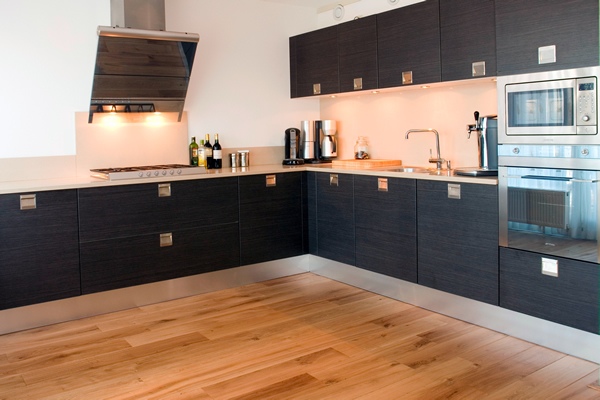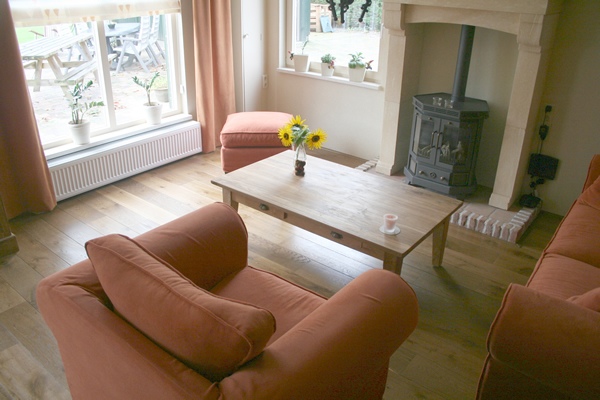Why Should I Choose Engineered Oak Flooring?
30th Jan 2014 @ 18:03
The choice of when to choose solid oak flooring, and when to choose engineered oak flooring, is an hugely important process. Opting for solid oak flooring, where you probably should have chose engineered oak flooring can cause you future problems. So when should you choose engineered oak flooring and in what areas?
Engineered oak boards are made up of a combination of solid oak and ply-board. Our engineered oak flooring is constructed of 6mm of solid oak which is bonded to 14mm of Siberian birch ply. These boards are tongue and grooved and available in a various widths and lengths. From above, an engineered oak floor is indistinguishable from a solid oak floor. The same range of grades are also available, so whether you are looking for the range of knots of the character grade or the clean look of the prime grade, it can be achieved.
The structure of engineered oak flooring is the main advantage that these boards have. Engineered oak flooring is much more stable and less prone to movement than a traditional solid oak floor. This stability allows engineered oak to be used in a much broader range of situations and areas.

One such area that an engineered floor is commonly used nowadays is in the bathroom. A bathroom area will naturally experience changes in humidity. Where a solid oak boards is likely to experience problems such as cupping, engineered oak is much better at dealing with these changes. For many of these same reasons, engineered oak is also now commonly used in kitchen areas.
Another common requirement with renovations nowadays is the need to lay your flooring over the top of an underfloor heating system. Due to the constant changing temperatures, solid oak boards would not be suitable for purpose. Engineered oak boards on the other hand can be laid over the top of an underfloor heating system.
The wider an oak board is, the more prone it is to movement. This can make fitting wider oak boards more difficult. For example, when glueing down an oak floor, we do not recommend glueing a solid oak board any wider than 120mm. For engineered oak flooring this is less of a problem, allowing you to glue down wider boards, if required.

Further to the glueing method, engineered oak also has its advantages with another method of fitting. This is the floating floor fitting method. This involves laying your wooden floor, with no direct fixing to the sub-floor. Instead the tongue and grooves of each board are glued together, with the boards simply floating above the sub-floor. This method is not suitable when laying a solid oak floor. With an engineered floor however, this can be a great simple way of fitting your floor.
If you would like to learn more regarding the advantages of engineered oak flooring, please give us a call on 01538 304584.




Add a comment